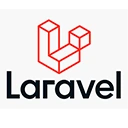Laravel's Dependency Injection Container (DIC) is a powerful tool that simplifies managing class dependencies in your web applications. It is at the core of Laravel's clean and elegant code architecture.
Understanding Dependency Injection
Before diving into Laravel's DIC, let's grasp the concept of dependency injection. Dependency injection is a design pattern used in object-oriented programming to achieve loose coupling between components of an application.
It's a way of providing a class with the objects it depends on (its dependencies) rather than letting the class create them itself.
Example of Dependency Injection:
class Car {
private $engine;
public function __construct(Engine $engine) {
$this->engine = $engine;
}
public function start() {
return $this->engine->start();
}
}
class Engine {
public function start() {
return "Engine started!";
}
In this example, the
CarEngineEngineCarLaravel's Dependency Injection Container (DIC)
Laravel's DIC simplifies and automates the process of managing class dependencies. It allows you to bind classes or interfaces to concrete implementations, automatically resolves dependencies when needed, and resolves them recursively.
Key Aspects of Laravel's DIC:
- Binding Classes and Interfaces: You can bind classes or interfaces to their implementations within the DIC.
- Resolving Dependencies: Laravel can automatically resolve classes from the DIC.
- Constructor Injection: Laravel relies on constructor injection to inject dependencies.
- Binding Interfaces to Implementations: You can bind interfaces to concrete implementations.
- Contextual Binding: Laravel allows you to bind dependencies within a specific context.
- Container Resolution: Laravel's DIC can resolve classes with dependencies, even recursively.
- Binding Singletons: You can bind a class or closure as a singleton.
- Resolving Dependencies from Controllers: Laravel allows you to resolve dependencies directly from your controllers' methods.
Advanced Usage:
Laravel's DIC offers advanced features like tagging, extending, contextual dependencies, and dependency injection into closures.
Conclusion
Mastering Laravel's Dependency Injection Container is crucial for writing clean, maintainable, and testable code. It simplifies dependency management, decouples your code, and enhances the modularity of your Laravel applications.
By understanding the concepts and features of Laravel's DIC, you can leverage its power to write efficient and modular code in your Laravel projects.

